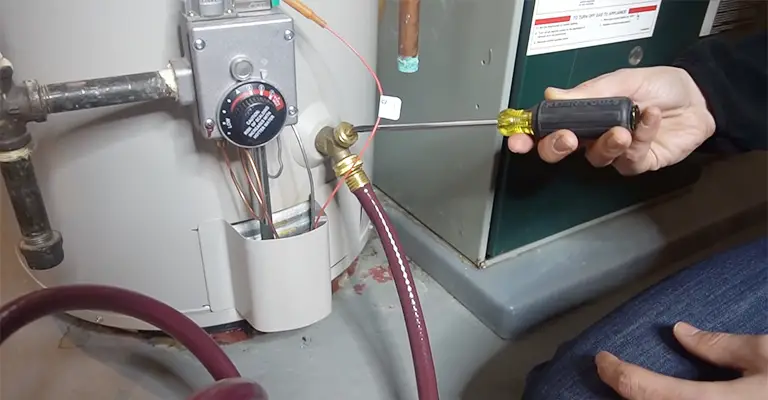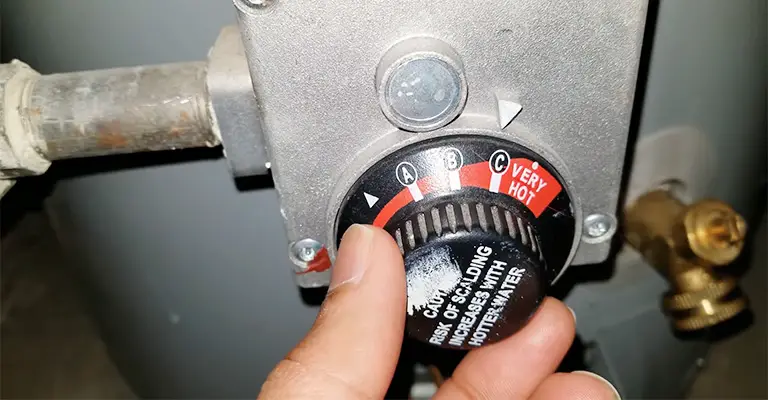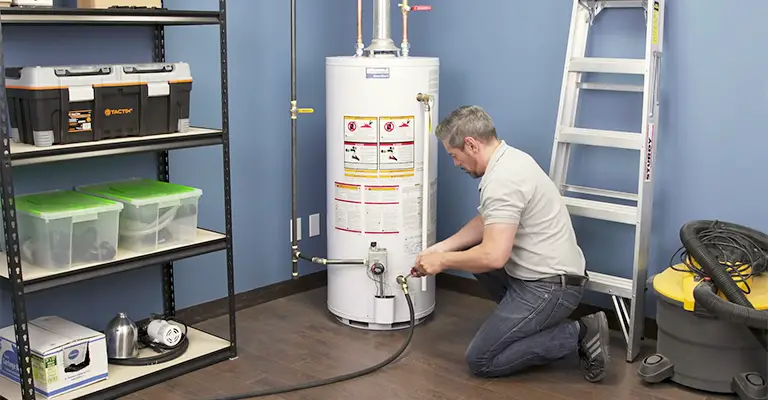Draining a water heater is a crucial maintenance task that helps improve its efficiency and prolong its lifespan.
However, draining can be a bit more challenging when you don’t have the convenience of a floor drain. A floor drain typically makes the process straightforward by allowing water to flow directly into the sewer system.
It can be messy to drain a water heater. While draining your water heater can be a pain, it’s necessary to do it once a year to prevent sediment buildup.
Your heater will last longer if you prevent sediment from accumulating, saving you money in the long run because it won’t need to be replaced as frequently.
People who live in hard water areas or don’t have water softeners should pay particular attention to this.
In many houses, flushed water can flow down into the plumbing system through drains on the floor near the water heater.
In the event that your home does not have drains, what do you do? Water heaters without floor drains can still be drained via other methods.
Should You Drain Your Water Heater?
Definitely. To prevent scaling and sediment from accumulating inside the tank, you should do it once a year, sometimes more when you have hard water.
Minerals from your home’s water supply make up sediment, which may look like sand. Due to their inability to dissolve, these minerals end up as particles within your unit.
Left unchecked, this build-up can cause significant problems, including lowering efficiency and functionality of the unit, as well as premature failure of the water heater.
Do You Need A Floor Drain For A Water Heater?
It is common for single-family dwellings to include floor drains despite the code not specifically requiring them.
The drains provide emergency drainage or may meet specific drainage requirements. The water heater can still be drained in many ways, regardless of whether you have a floor drain or not.
The bottom of the sump can be reached by attaching a hose to the drain, sticking the other end out of a window, or running it through a window. Let the pressure drive out the dregs by opening the drain.
How to Flush a Water Heater With No Floor Drain?

- Ensure that all electricity to the water heater is turned off, including the breaker, before performing any service. The water supply to the heater should be shut off and allowed to cool (this may take several hours).
- You can usually find the water heater’s drain valve near the bottom of the tank. A standard garden hose can be threaded onto the valve to drain the water from the tank if you do not have a floor drain.
- The water from the unit can be simply drained into a bucket with gravity, but if you want to pump it outside, you will need a remote pump.
- Making it easier to dispose of unwanted water. Once you’ve connected the pump, follow the instructions provided by the manufacturer. To prevent damage to your pipes, open a few hot water faucets in your house.
- Drain the water and check for sediment. Depending on the quality of the water, you may need to drain the heater and refill it if the water has sediment or is not clear.
- Water shut off valves can be turned on and off a few times to stir up sediment at the bottom of the tank.
- If the water does not run clear after several fills and drains, refill and drain the heater as needed. A one-time flush is generally enough for a good unit, and you won’t need to do it again for a year.
- It may be time to call a professional if there is an excessive amount of sediment in your water. You may want to add a water filter or treatment system to your home.
- Disconnect both the hose and the pump once all of the water has run clear and the unit is empty. Fill the tank before turning on the power source, and close the drain valve.
- Ensure that the water heater is powered on. With the exception of some initial air pockets that will be released through the faucets, performance should resume as usual.
- It usually takes a few seconds for the air to be purged, and then the water will flow normally again. If you had opened water taps previously, turn them off.
Using A Remote Sump Pump

Gravity will do most of the work of draining out your water heater depending on its location, its size, and its proximity to the nearest tub, toilet, or window.
The water may not always flow through the hose with gravity, and sometimes you will need to use additional power.
It may be necessary to use a remote sump pump to transport water from the heater drain pump to where it needs to be emptied.
Consider renting a remote sump pump from your local hardware store or looking online for remote sump pumps.
Two sections of hose are all you need. There will be one section of hose connected to the water heater drain and the sump pump, and another section will connect to the drain where the sump pump is located.
How to Tell if Your Water Heater Has Sediment Build-Up?
You can tell if your water heater has sediment buildup by looking for the following signs:
- Water temperature fluctuates and is inconsistent
- Warming up the hot water takes a long time
- There is an odor or rust in your hot water
- While running, the water heater makes noise
- Premature loss of hot water
- Despite no increase in usage, energy bills go up
Call a Plumber or DIY?
It is understandable that many homeowners don’t want to deal with anything plumbing-related. The cost of a mistake can be high.
If you make a mistake, the next thing you know, you’re telling everyone that they won’t be able to shower for two days.
There isn’t much to it when it comes to draining a water heater, even if it doesn’t have an attached floor drain.
Nevertheless, if you’re concerned, you can always hire a professional plumber to do it for you. When you see how they do it, you can be more confident about doing it yourself in the future.
You can drain your heater quickly with the help of remote sump pumps provided by plumbers.
Final Words
Nowadays, it is fairly common for homes not to have floor drains. Water heaters can be drained fairly easily since homeowners and plumbers have adapted to new plumbing realities.
When you drain your heater, hard water won’t build up in it as quickly, extending the life of your appliance.
Despite the fact that it is relatively easy to drain a water heater, a professional can identify potential problems that may not be obvious to the homeowner if the water does not drain or the heater’s performance problems don’t improve after flushing the unit.
It takes a day to complete the entire process. If this is your first time, make sure you have plenty of old towels on hand to clean up spills.
You can quickly close the drain if anything goes wrong and stop the flow of water while you adjust and try again.








